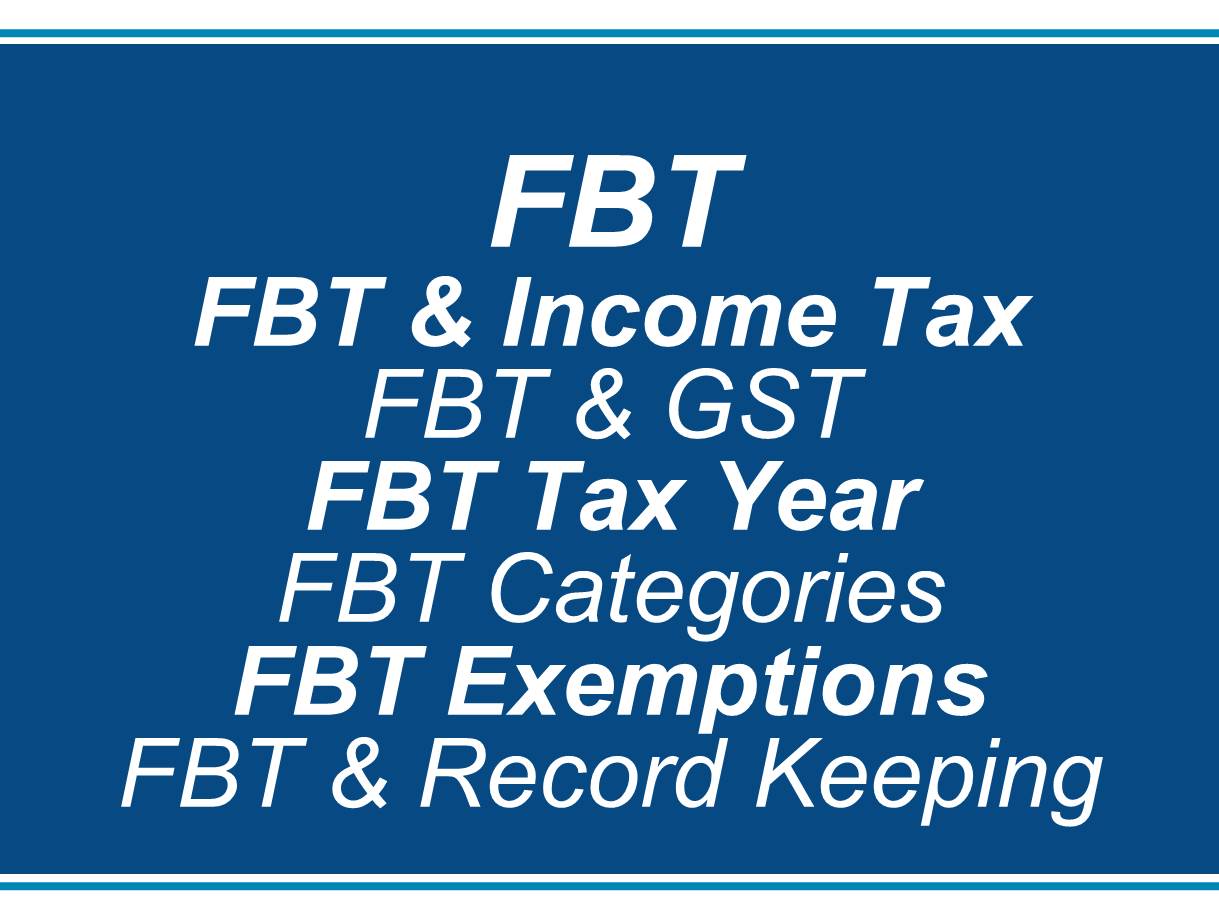Why you want to understand Fringe Benefits Tax
As an employer you may be up for fringe benefits tax (FBT) if you own a business that employs staff and the business provides remuneration to your employees in a form other than straight salary.
The benefit for your employees is that they do not then have to pay income tax on the value of the benefits your business provided to them.
How is FBT related to income tax?
Fringe Benefits Tax is separate to income tax. The FBT has its own schedule, with the FBT tax year being from April 1st to March 31st.
Fringe Benefits Tax is calculated using a “grossed-up taxable value” of the relevant benefit provided and is payable at the current FBT rate of 47% for the FBT year ended March 31, 2015. Note that the rate increases to 49% as a result of the Temporary Budget Repair Levy for the 2016 and 2017 FBT years.”
When does Fringe Benefits Tax come into play?
Under the FBT law, a fringe benefit comes into play when one of the categories of benefits (see below) is provided by an employer, an “associate” of an employer, or a third party under arrangement with either of the former.
An employer is seen to be providing a fringe benefit if, for example, it:
- Permits an employee to use a work vehicle for private purposes
- Provides a loan to the employee with interest charged (even a minimal level of interest)
- Reimburses a worker for a private expense, such as school fees
Fringe Benefit Categories
The Tax Office has several different categories of fringe benefits, including:
Car Fringe Benefit
Debt Waiver
Loan Fringe Benefit
Expense Payment
Housing Fringe Benefit
Living Away From Home Allowance
Airline Transport
Board (Accommodation)
Entertainment
Tax-Exempt Body Entertainment
Car Parking
Property Fringe Benefit
Residual Benefits (that is, other benefits not covered in this list)
Payments not deemed to be fringe benefits
Salary of course is not a fringe benefit, and neither is a super contribution. Entitlements under employee share acquisition schemes are not deemed to be a fringe benefit, nor are termination payments.
FBT and GST
The higher gross-up rate (2.0802 for the 2014-15 FBT year, and 2.1463 for the 2015-16 FBT year) is used where you are entitled to claim a GST credit for GST paid on benefits provided to an employee, known as GST-creditable benefits. The lower gross-up rate (1.8868 for 2014-15 and 1.9608 for 2015-16) is used where there is no entitlement to a GST credit.
Exemptions from FBT
Minor benefits (that is benefits that have a GST-inclusive value of $300 or less) are generally exempt from FBT. However, one of the conditions to maintain this exemption is that minor benefits must be offered with “infrequency and irregularity”.
There can also be other conditions (check with us). Examples of minor benefits can include:
- The occasional lunch
- Birthday gifts
- Flowers on special occasions
- The Christmas party
- Or a one-off interest free loan
- Note also that there can be multiple minor benefits (that is, each can have a value of less than $300)
- Certain exempt vehicles (check with us)
- Certain work-related items
Conditions of exemption from FBT
A condition of exemption generally is that the benefit or item is primarily used to enable your employees to do their job. These include protective clothing, calculators or tools of trade, portable computer and other items. There are other benefits that escape the FBT net, which you can ask us about.
Record keeping for FBT
The Tax Office has reduced the FBT record keeping requirements for small businesses somewhat by creating a value of benefits threshold under which full records need not be kept. You will still however, be required to show the value of benefits on employee payment summaries.
The threshold for the 2014-15 FBT year is $7,965, but it increases each year. As long as benefits paid do not exceed 20% on top of the previous year, the exemption can still apply for subsequent years.


